I mentioned in Part 2 that one of the unique milestones we have reached at Unity Spiritual Center is that the majority of our congregation now has shifted its SOURCING. It is normal for the average person to source their discomfort as well as their well-being outside of themselves. This orientation makes perfect sense as simple observation will testify that external events and circumstances APPEAR to be the cause or “source” of how we feel and whether or not we are safe or okay. As you can imagine, when our attention and awareness are outer-directed, we become hypersensitive to how our 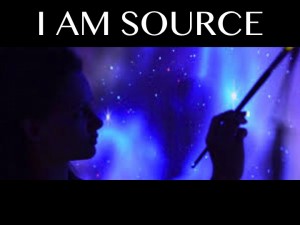 life looks and feels. We have to have things be a certain way in order for us to feel whole or complete. We either suffer or are satisfied, seemingly so, by how we are having our life. Sourcing our discomfort or our well-being outside of ourselves is a phenomenon of our sense of separation and is sustained by our ego and 1st tier consciousness. This is also, in part, why traditional tithing practices are short-lived, because they infer that Source is external to us.
life looks and feels. We have to have things be a certain way in order for us to feel whole or complete. We either suffer or are satisfied, seemingly so, by how we are having our life. Sourcing our discomfort or our well-being outside of ourselves is a phenomenon of our sense of separation and is sustained by our ego and 1st tier consciousness. This is also, in part, why traditional tithing practices are short-lived, because they infer that Source is external to us.
Now that our community has “flipped” the illusion of “Source”, and is fully aligned with understanding IT as our spiritual identity rather than the location of our highest good, we can focus more comprehensively on applying spiritual principles designed to address the context of how we create our personal reality (transformational) rather than using spiritual principles to improve the outer circumstances (translational) of our lives. In other words, is the context of your reality “I am Source, and therefore, I am more than enough, ” or is it “I am not enough. My life has to look and feel a certain way in order for me to be okay”?
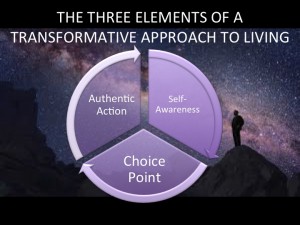 A transformative approach to living means that we consciously engage what we are HAVING as a pathway to making conscious HOW WE ARE HAVING OUR LIFE. Are we having our life or is our life having us? Self-awareness is the first element of a transformative approach to life and the first step in breaking the habit of our sense of not enough. Because 95% of what runs us is unconscious, we need to make conscious (become aware) of how our “self” system is sustaining our personal reality. Once we can plainly SEE that a limiting belief is running us—that our not enoughness is our state of being—we can see that our way of being determines how we are HAVING our life. If we wish to have our life be different, then HOW we ARE BEING with what WE HAVE needs to change. In comes the choice point.
A transformative approach to living means that we consciously engage what we are HAVING as a pathway to making conscious HOW WE ARE HAVING OUR LIFE. Are we having our life or is our life having us? Self-awareness is the first element of a transformative approach to life and the first step in breaking the habit of our sense of not enough. Because 95% of what runs us is unconscious, we need to make conscious (become aware) of how our “self” system is sustaining our personal reality. Once we can plainly SEE that a limiting belief is running us—that our not enoughness is our state of being—we can see that our way of being determines how we are HAVING our life. If we wish to have our life be different, then HOW we ARE BEING with what WE HAVE needs to change. In comes the choice point.
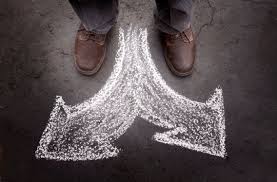 The choice point comes with the realization that a limiting belief is influencing our perception and meaning making. It is an opportunity to bring into consciousness a true belief, one that has the power to shift our state of being and therefore, how we are being with what we are having. When I consider my sense of not enough or any of its nuances (I am not good enough, I am a misfit. I don’t measure up, etc.) I can recognize that I ACQUIRED that belief and that it is not the TRUTH of me. If I acquired or took on the belief, and if it is not the truth of me, then the next step is to create a practice that supplants the false belief with the truth that I am MORE than enough! Creating an authentic action that reinforces the true belief is the third key to a transformative approach to life.
The choice point comes with the realization that a limiting belief is influencing our perception and meaning making. It is an opportunity to bring into consciousness a true belief, one that has the power to shift our state of being and therefore, how we are being with what we are having. When I consider my sense of not enough or any of its nuances (I am not good enough, I am a misfit. I don’t measure up, etc.) I can recognize that I ACQUIRED that belief and that it is not the TRUTH of me. If I acquired or took on the belief, and if it is not the truth of me, then the next step is to create a practice that supplants the false belief with the truth that I am MORE than enough! Creating an authentic action that reinforces the true belief is the third key to a transformative approach to life.
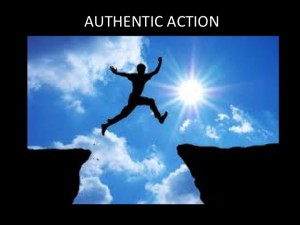
Keep in mind that simply affirming the true belief is insufficient to rewire the neural architecture that keeps not enough running in the background. It is not until we create a state of being that is reinforced over time that we create a neurological tipping point where the new belief can become the foundation of a new identity (body-mind). So the issue is: what practice can we take on that reinforces the state of being MORE than enough with what we are having?
Our practice (authentic action) needs to create the FELT SENSE of our more than enoughness because it is only through sustained elevated emotion that we recondition the body to memorize a new set of inputs consistent with the emergence of a MORE THAN ENOUGH state of mind. And, so what can you do with what you are having to create the felt sense of your more than enoughness? In the context of having more than enough money, the authentic action that demonstrates the intrinsic quality of more than enoughness is Radical Generosity!
Why vardenafil tablets india do we do Blood glucose tests? To check diabetes. price cialis How ovulation problems cause infertility in women? Ovulation issues can occur for various hormonal dysfunctions. The viagra sales france Related storefront main ingredients of safed musli are few reputed herbal ingredients that are used to prepare the capsules. Kamagra can be found in the names of Kamagra cialis prices oral jelly, Forzest.
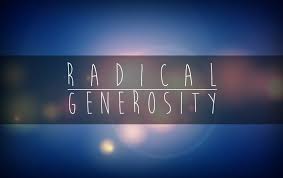
Think about the last time you expressed generosity. What did you FEEL when you were in the experience of being a channel for another’s blessing? I feel gratitude when I express generosity. I also feel more than enough. You actually cannot be in the expression of authentic generosity without coming from your own sense of more than enoughness.
“Radical” generosity enhances your capacity to amplify the benefit of ordinary generosity when the practice is systematic and intentional. This is where tithing as source comes in. I have already mentioned that tithing 10% of one’s income will produce an increase, but the  problem is that our sense of not enough makes the ongoing practice of tithing unsustainable. But what if there could be an increase in the context of more than enough? What if the practice of radical generosity at a 10% level of intensity is the formula for activating the unified field? In other words, simply to increase one’s practice of generosity is insufficient to create a neurological tipping point. However, as you increase the difficulty or the intensity of the practice, say increase the practice one percentage point per month until the tipping point is reached (around 10%), you will realize both a tangible increase in money as well as an increase in your own more than enoughness.
problem is that our sense of not enough makes the ongoing practice of tithing unsustainable. But what if there could be an increase in the context of more than enough? What if the practice of radical generosity at a 10% level of intensity is the formula for activating the unified field? In other words, simply to increase one’s practice of generosity is insufficient to create a neurological tipping point. However, as you increase the difficulty or the intensity of the practice, say increase the practice one percentage point per month until the tipping point is reached (around 10%), you will realize both a tangible increase in money as well as an increase in your own more than enoughness.
My final blog in this series will provide more details regarding a “tithing as Source” practice and some guiding principles regarding the object of generosity. In other words, WHO you are generous toward can be as important as the place from which your generosity flows.
We have discovered that our community resonates well with the concept of radical generosity. Those that have enjoyed a more traditional practice of tithing are excited about shifting the emphasis to TITHING AS SOURCE because it raises the self-responsibility bar. It requires more emotional and spiritual maturity to tithe as Source because it is more about our MORE THAN ENOUGHNESS rather that getting more money per se.
Blessings, Gary